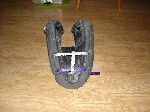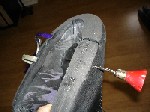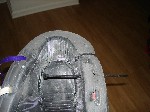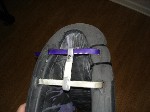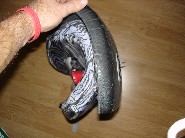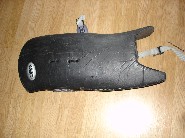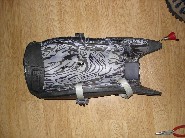Selections, mention the word and the reactions for keepers competing for a spot on a team range from a rise in pulse and butterflies the size of basketballs in his/her stomach to nerves of steel and a confidence that says “bring it on.” Whether it’s a club first eleven or a National team, making and selecting a team can be a challenging experience for keepers and coaches alike.
In the world of competitive sport the selection process is a necessary component in trying to find the best players for a team, but unlike sports like track and field finding the best goalkeeper isn’t simply a matter of finding the fastest or strongest athlete. Fast doesn’t always translate to smart. Strong doesn’t necessarily mean quick. A keeper needs to be fast, strong, quick, smart and more. The best goalkeeper for one team may be the wrong keeper for another depending on his/her personality, a team’s style of play, the demands of a coach and the players on the squad.
As a player and a coach I’ve been involved in the selection process many times, with varying successes. I can remember my first selections more than 20 years ago. I was one of six keepers trying out for two spots on a regional select team. The trials consisted of three games with players split into teams. I played two halves for two different teams and saw two shots, allowing no goals and thought to myself I was sure to have made the team. At the end of the games we were told we would be receiving a call if selected and I’m still waiting for that call. Fortunately, I’ve received other calls since then.
Looking back at my first trials from my perspective as a player I considered the process unfair and arbitrary. I had no idea what I was being evaluated on and though I know now there were good reasons for me not making the team it would have been good to know what coaches were looking for. How to make a team shouldn’t be a mystery. The goal of selections is to pick the best keepers for a team and the more prepared keepers are, the better they’re likely to perform. In this tip, we’ll examine some of the attributes of goalkeepers and ways to evaluate them as well as looking at the roles and responsibilities of coaches, selectors and keepers.
The Selection Process
There is a wide range as to what constitutes selections depending on the type of team being selected, facilities and the quality of keepers competing for the position. Selection length can be anywhere from a game, an afternoon, to a week or more. They can consist of a game, a series of games, physical tests, skill tests, drills and even written exams. Selections for an Under 12 team are going to be different those of an Olympic team, but whatever the skill level, it’s important to have a solid idea of the attributes of the position regardless of whether you’re trying out for a team or selecting it.
In my experience I’ve had the opportunity to see and experience selections around the world and from those have drawn some common criteria. I’ve listed them below in no particular order and provided some examples of each:
Physical — Physical attributes include height, weight, body type, strength and flexibility. While some physical components like strength and flexibility can be developed, physical attributes tend to be what the keeper brings to the position naturally.
Athleticism — Athleticism is a broad category and includes fitness, agility, speed, reactions and ambidexterity. While there are physical components to athletic attributes, athleticism is more trainable (a 25-year old keeper can run faster through training, but he/she isn’t likely to get taller). Measures of fitness can range from a 5km run, a BIP test, to a series of 25-meter sprints. Agility incorporates balance and movement. It includes planned movement and reaction movement. Speed is the ability to move from point A to point B and in the context of the position includes covering distances from .5 meter to 15 meters, and directionally (forward, backwards and side to side). Reactions are the ability to stop a ball regardless of speed or distance with the appropriate body part. Ambidexterity is the ability to use either left or right side of the body (hands or feet) to save and clear a shot.
Skills — In the broadest sense, skills are trained reactions that allow the keeper to save and clear the ball. A goalkeeper is more than a shot blocker and skills allow him/her to play a shot successfully to safety. Depending on the speed and location of the shot, skills can include kicking or deflecting with either foot, actively deflecting with legs or hands and tackling from an upright or sliding position.
Mental — A goalkeeper must be able to think the game. He/she must be able to position a defense and him/herself accordingly. A keeper needs to read situations and make decisions regarding appropriate skills and position for him/herself. Presence is a word that’s frequently used when describing keepers and it speaks to an aura of confidence and composure. Keepers with presence seem to play bigger and faster than they are. They have the ability to settle a rattled defense with the key save or right words at critical times in a game.
Coachability — How does a keeper respond to feedback? Does he/she try to make the changes or is there a “but” to every comment? Is he/she self-motivated? Are they on time? Are they prepared? Do they work well with others? Sometimes the most talented keeper isn’t worth the drain he/she brings to a team.
Selections may have specific formal protocol or simply consist of just observing. Selectors may be asked to be anonymous during the process. They may be asked to discount previous experiences with keepers involved in trials and consider their play only in the context of the current selections. Protocol usually follows the significance of the team being selected. If you’re responsible for designing a selection you are responsible for that protocol as well as determining how you’re going to evaluate keepers.
There are a number of elements to consider when designing trials: How many keepers are trying out? What is their age and experience? What kind of facilities and equipment do you have? What are you trying to assess? What skills are you looking to see? Are you looking to measure technical or tactical ability? What measures are you using for evaluating keepers? Are you accounting for variables? It would be great if there were a universal one-size-fits-all selection process, but there’s not. Just as there isn’t a universal one-size-fits-all goalkeeper the process used to select keepers will determine the keepers selected.
As a coach and selector, I like to see keepers in as many settings as possible in trials. I want to get a sense of a keeper’s overall fitness, his/her position specific fitness, his/her technical skills and how he/she performs in games. If there’s general fitness testing for field players, I want to see how keepers perform (as long as that testing doesn’t severely impact their ability to perform in other parts of the trials). I like to use drills where keepers have to play a variety of balls (i.e. hard drives, chips, flicks, crosses) from a variety of locations to targets. I want to see how a keeper thinks. I like decision-making drills where a keeper can use a variety of skills to be successful. How does a keeper play with strong and weak players? Depending on the needs of a team, those areas may have more or less emphasis. The selection process used goes a long way towards determining the type of keeper you select.
For Selectors/Coaches
The type of team being chosen usually dictates who does the selections. At the club level, coaches are usually responsible for picking their team. At the regional level, local associations might leave the team’s coaches to select their squad or appoint neutral coaches to choose keepers or assist the coach in his/her selections. Selection committees tend to be the norm at the national level and governing bodies usually have defined protocol for input from the coach and the responsibilities and qualifications of selectors.
Depending on the type of team selected, being a selector can carry a wide range of responsibilities. At a minimum, a selector should be an impartial observer and evaluator. At the national and regional level selection criteria may be issued and the selectors’ responsibility is to adhere to it. At the club level the job may entail establishing criteria for evaluating keepers and/or administering drills.
Whether it be a coach or a selector, it’s important for those picking the team to have a concrete idea of the ideal keeper. I’ve mentioned some of the attributes I feel are important. Depending on the needs and abilities of a team, the importance and emphasis on another selector/coach’s attributes may vary. I’ve seen trials where selectors are given evaluation forms to rate and rank goalkeepers with specific criteria for grading attributes. At the other end of the spectrum, selectors might be sent out with the vague instructions, “pick the best one.” Either way, selectors should come in to the process with an open mind and a clear of idea of what they’re looking for.
It’s important that selectors are well prepared and have evidence to support their selections. If I’m selecting, I like to get to sessions early. I like to see what keepers do when they’re left on their own to warm up. Do they cool down after a session? I like to see how they interact with other keepers and those they play with on the field. How do they respond to feedback? I keep my own notebook for selections in addition to any criteria I may be given to evaluate keepers at a trials. I find the more I have written down, the better the frame of reference I have when comparing keepers and writing evaluations.
Part of being selector is giving keepers as fair an opportunity to show their talents as possible. It may be impossible to see every play a keeper makes at a trial, but a selector should give his/her undivided attention for the times he/she is observing. As I mentioned, I like to see keepers play as much as possible and in as many settings as trials allow. How does a keeper train? How does the keeper play? Does the keeper make the flash save and then allow the ordinary goal? How does the keeper stand up under pressure?
While a coach/selector may not pick a keeper for their team, they can aid in the development of the keeper and the team by giving specific feedback on why a player didn’t make the team and what they need to work on. Those keepers may come back to help the team in years to come with good feedback. Exit interviews for all keepers trying out for a team are an excellent way to review performances.
For Keepers
As a player, preparation was key to my success. I found the more I knew about the selection process, the better my chances for success. Others might just be able to wing it. Good things to know are: How long are selections going to be? Are they a couple of hours or days? What do the trials consist of? Where are the trials? How long does it take to get there? Are the trials simply playing games or are there drills? Is there physical testing? What are the drills and testing? I always performed better in drills or testing if I had the chance to practice them beforehand and the more I knew, the more confidently I performed.
Details like making sure kit is in good working order are important. The last thing a keeper needs to worry about is a loose screw on a helmet or a broken kicker strap when he/she is playing for a chance to reach his/her dreams. Bring sufficient and appropriate clothes and shoes for the weather, type of facility and activity. Control the controllable. Bring a water bottle and food like energy bars or fruit. Be self-sufficient. As a selector I’m impressed by younger keepers who don’t require their parents as personal servants.
First impressions are important. Be on time. Know where the trials are and allow travel time. Dress the part. I’ve seen keepers show up at trials sporting beer t-shirts, cut-off shirts, shorts and bare feet, and I wonder if they’ve thought about the message they’re sending. How do you respond to feedback and surprises? Do you “freak” or do you roll with the punches. Getting noticed is important in selections, but what are you getting noticed for? I’ve seen keepers go out of their way to make a basic save seem extraordinary. Knowledgeable coaches are more impressed by effective play.
Be professional. Know the schedule. Bring a notebook and pen. Write things down. Drills, times, dates, and expectations are important. Take care of yourself. If you need extra time to warm up, make sure you arrive early enough to take care of yourself. Ask questions where appropriate. If you’re not sure about a technique or a drill, ask.
Finally, enjoy the process. By their nature selections are stressful. You’re putting yourself on the line as a player, but stress shouldn’t be a burden. Selections are a test just as games are a test. If you didn’t enjoy the challenge of games you wouldn’t play the position. Don’t get caught up in how other keepers play. The only performance you can control is yours. While your ultimate goal is to make a team, it never hurts to have your own goal of improving with every selection experience. Progress can be measured by performing better every time you play regardless of the outcome and a keeper can and should take satisfaction in that.
Selections can be challenging for those making the decisions and those putting themselves up for a team. Players may have invested years of training and personal sacrifice to make a team and are likely to be disappointed when they’re not selected. I’ve experienced that disappointment in my career as a player, but I always felt better if I understood the process and was told where I fell short. As selectors and coaches it’s satisfying to see the players you pick warrant their selection with great performances. They should take equal satisfaction from the player who was inspired by not making the team and came back to be a better player the next time around.
Good luck,
Jon
e-mail Jon
Please note that OBO together with Jon O’Haire hold copyright over any material appearing on tips pages. We welcome the printing and distribution of these tips, provided that they are not sold, or used for financial gain. This paragraph must appear on all printed or distributed copies. The photographs above must not be used in any form without express permission from Jon O’Haire.
